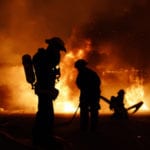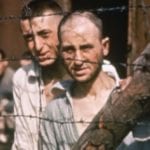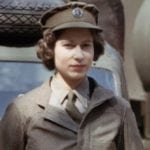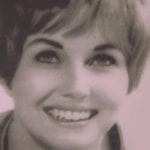 Politics
Politics  Politics
Politics  Weird Stuff
Weird Stuff 10 Eggs-traordinarily Odd Eggs
 History
History 10 Desperate Last Stands That Ended in Victory
 Animals
Animals Ten Times It Rained Animals (Yes, Animals)
 Mysteries
Mysteries 10 Devastating Missing Child Cases That Remain Unsolved
 Creepy
Creepy 10 Scary Tales from the Middle Ages That’ll Keep You up at Night
 Humans
Humans 10 One-of-a-kind People the World Said Goodbye to in July 2024
 Movies and TV
Movies and TV 10 Holiday Movies Released at Odd Times of the Year
 Politics
Politics 10 Countries Where Religion and Politics Are Inseparable
 Weird Stuff
Weird Stuff 10 Freaky Times When Famous Body Parts Were Stolen
 Politics
Politics The 10 Most Bizarre Presidential Elections in Human History
 Weird Stuff
Weird Stuff 10 Eggs-traordinarily Odd Eggs
 History
History 10 Desperate Last Stands That Ended in Victory
Who's Behind Listverse?

Jamie Frater
Head Editor
Jamie founded Listverse due to an insatiable desire to share fascinating, obscure, and bizarre facts. He has been a guest speaker on numerous national radio and television stations and is a five time published author.
More About Us Animals
Animals Ten Times It Rained Animals (Yes, Animals)
 Mysteries
Mysteries 10 Devastating Missing Child Cases That Remain Unsolved
 Creepy
Creepy 10 Scary Tales from the Middle Ages That’ll Keep You up at Night
 Humans
Humans 10 One-of-a-kind People the World Said Goodbye to in July 2024
 Movies and TV
Movies and TV 10 Holiday Movies Released at Odd Times of the Year
 Politics
Politics 10 Countries Where Religion and Politics Are Inseparable
 Weird Stuff
Weird Stuff 10 Freaky Times When Famous Body Parts Were Stolen
10 Outstanding Athletes Who Went On To Become War Heroes
Today’s professional athletes are often viewed as overpaid and selfish, with recent sports headlines being dominated by scandals involving domestic abuse and performance-enhancing drugs. The people involved in these issues don’t represent the majority of athletes, however. Many outstanding athletes have even put their careers on hold and their lives at risk to serve in the military during times of war.
10Louis Zamperini

Zamperini, a runner who competed in the 1936 Berlin Olympics, went on to serve in World War II. He went missing during the war after his plane crashed in the Pacific Ocean and was assigned an “official death date” by the War Department, which included a letter of condolence sent by President Franklin Delano Roosevelt. The reality was that Zamperini survived 47 days at sea while floating on a raft, only to be captured and taken prisoner by the Japanese.
After surviving in the Pacific by collecting rainfall and catching the occasional albatross, Zamperini was subjected to cruel torture at the hands of Mutsuhiro Watanabe, a Japanese sergeant whose nickname was “The Bird.” His indomitable spirit may have been foreshadowed in his Olympic performance, where his closing lap in the 5,000 meters was recorded at just 56 seconds as he tried to run down his competition.
His story was immortalized in the book Unbroken, which has been adapted into a feature-length film directed by Angelina Jolie.
9Warren Spahn
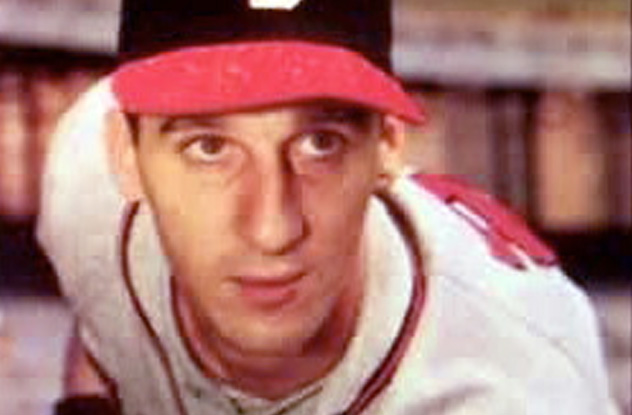
Spahn was one half of the dominant pitching duo that inspired Gerald V. Herm to write the poem that was later shortened to the epigram, “Spahn and Sain and Pray for Rain.” The Baseball Hall of Famer is the all-time leader in wins among left-handers and sixth overall with 363 wins. Before beginning a baseball career that would include 17 All-Star Game appearances, two no-hitters and a Cy Young Award, Spahn served in the Army beginning in 1942.
Spahn saw a great deal of combat, serving in a unit that included convicts who had been released early from their sentences in exchange for enlisting. Spahn fought during both the Battle of the Bulge and the Battle of Hurtgen Forest. Of the latter battle, Spahn said, “We were surrounded in the Hurtgen Forest and had to fight our way out of there. Our feet were frozen when we went to sleep, and they were frozen when we woke up. We didn’t have a bath or change of clothes for weeks.”
Spahn’s unit earned recognition for taking and maintaining the Ludendorff Bridge at Remagen, the only bridge over the Rhine River taken by Allied Forces. In addition to the Distinguished Unit Emblem, Spahn also earned a Bronze Star and a Purple Heart.
Some baseball historians believe that his service time may have prevented him from reaching 400 wins, but Spahn himself thought the war played an important role in shaping his career, saying, “I matured a lot in those years. If I had not had that maturity, I wouldn’t have pitched until I was 45 . . . after what I went through overseas, I never thought of anything I was told to do in baseball as hard work. You get over feeling like that when you spend days on end sleeping in frozen tank tracks in enemy threatened territory.”
8Bob Kalsu
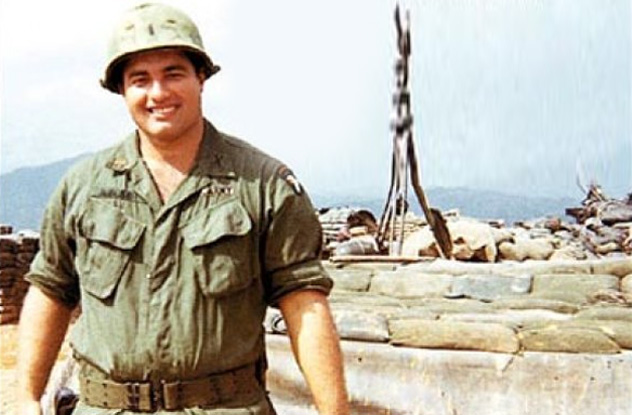
Look up at the Ring of Honor at Ralph Wilson Stadium in Orchard Park, New York. Among the names of legendary Buffalo Bills is a man who never made it past his rookie year in the National Football League. That’s because Bob Kalsu, during a time in which many professional athletes were able to avoid the Vietnam War due to their high-profile careers, volunteered for active duty and was called on to serve in one of the most dangerous and war-torn areas. Stationed at Firebase Ripcord, Kalsu was named the acting commander of his unit when his commanding officer had to be airlifted out to have shrapnel removed from his neck.
The North Vietnamese Army was determined to move Kalsu and his men from Ripcord, and the firebase was subjected to 600 rounds per day, the heaviest attacks coming when choppers landed to bring supplies. Despite his rank, Kalsu exposed himself to the heavy fire so he could assist his men in carrying the newly delivered shells to their position on the hill.
Philip Michaud, who was there with Kalsu at Ripcord, described him as “a fearless guy, smart, brave and respected by his troops.” Of the frequent NVA attacks, Michaud relayed the following about the acting commander: “Rounds were coming in, and he was out there. I told him a few times, ‘It’s good to run around and show what leadership is about, but when rounds are blowing up in your area, you ought to hunker down behind a gun wheel. Or a bunker.’ ”
Perhaps the most heart-wrenching part of the story has to do with Kalsu’s family life back home. After Kalsu died by enemy mortar fire, an Army officer was dispatched to his home to tell his wife of the incident. She was not there. The officer was directed to a local hospital, where he gave Jan Kalsu the news shortly after she had delivered the couple’s second child, a baby boy.
7Archie Williams
Like fellow gold medalist Jesse Owens, Archie Williams threw a wrench into Adolf Hitler’s theory of Aryan dominance with his performance at the 1936 Olympics in Berlin. While the story of how Hitler refused to shake Owens’s hand after his victories is quite well known (in reality, he shook no athlete’s hand after the opening ceremonies, regardless of their race), Williams felt similarly snubbed. When asked about his exchange with the German Chancellor, Williams said, “Hitler wouldn’t shake my hand either!” Williams competed in the 400 meters, an event in which he had set the world record of 46.1 seconds earlier that year while competing for UC-Berkeley at the NCAA Championships.
Williams’s athletic career was cut short by a hamstring injury, so he earned his pilot’s license and became a commercial pilot. He later served as a pilot during World War II and was commissioned in the Air Force in 1943. Williams worked with the Tuskegee Airmen as a flight instructor and remained in the service for over 20 years.
6Dwight F. Davis
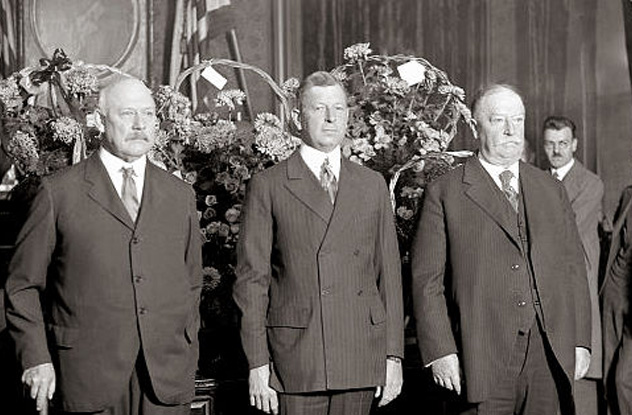
The Davis Cup is a tennis tradition that began back in 1900, when Dwight F. Davis and other members of the Harvard tennis team wished to arrange a match between the United States and Great Britain. The annual competition is likely Davis’s legacy, but the founder of the Davis Cup was also awarded the Distinguished Service Cross for “extraordinary heroism in action between Baulny and Chaudron Farm, France, September 29–30, 1918.”
Davis’s citation relays his impressive feats during battle. “After exposure to severe shelling and machinegun fire for three days, during which time he displayed rare courage and devotion to duty, Major Davis, then adjutant, 69th Infantry Brigade, voluntarily and in the face of intense enemy machinegun and artillery fire proceeded to various points in his brigade sector, assisted in reorganizing positions, and in replacing units of the brigade, this self-imposed duty necessitating continued exposure to concentrated enemy fire.
“On September 28, 1918, learning that a strong counterattack had been launched by the enemy against Baulny ridge and was progressing successfully, he voluntarily organized such special duty men as could be found and with them rushed forward to reinforce the line under attack, exposing himself with such coolness and great courage that his conduct inspired the troops in this crisis and enabled them to hold on in the face of vastly superior numbers.”
Davis then went on to serve as President Calvin Coolidge’s Secretary of War and Governor General of the Philippines. He is buried in Arlington National Cemetery.
5Charley Paddock
Anyone who has seen the movie Chariots of Fire will remember Charley Paddock as the brash American who defeats Harold Abrahams by a wide margin in the 200 meters on his way to a silver medal at the 1924 Olympics. In reality, Paddock also won gold in the 100 meters and the 4×100 meter relay, along with another silver in the 200 meters in the 1920 Olympic Games. He held world records in several events throughout his career, earning recognition as the “World’s Fastest Human.”
His Olympic efforts were bookended by service in both World War I and World War II. Serving in the Marine Corps, Paddock was a lieutenant of field artillery during World War I and a member of the personal staff of Major General William P. Upshur during World War II. Both Paddock and Upshur died in a plane crash while serving during World War II.
4Ted Williams

Teddy Ballgame is remembered by most baseball fans as one of the greatest hitters to ever play. Over his career, Williams batted .344 while hitting 521 home runs. These numbers are all the more impressive considering that he lost several years of his playing career while serving in the Navy in two different wars: World War II and the Korean War.
He served as an instructor during World War II. During the Korean War he took enemy fire and was hit multiple times, even crash-landing during one of his missions. During his time as an enlisted man, Williams earned three Air Medals for Aerial Flight Operations, along with a Navy Unit commendation and the Presidential Medal of Freedom.
During his time in Korea, Williams served as a wingman to another iconic figure: John Glenn. The two spoke fondly of one another. According to Glenn, Williams “was just great. The same skills that made him the best baseball hitter ever—the eye, the coordination, the discipline—are what he used to make himself an excellent combat pilot.”
3Roy Gleason
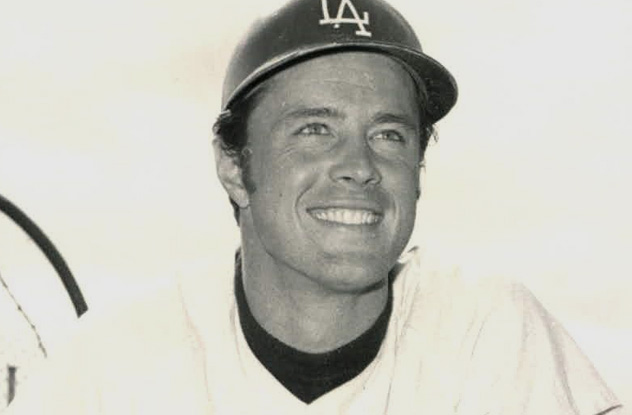
Gleason made it to the big leagues at just 20 years of age, being called up to play with the Los Angeles Dodgers toward the end of the 1963 season. Only up for a “cup of coffee,” Gleason earned a hit in his only at-bat that season, though he did appear in seven other games as a pinch runner. The Dodgers won the World Series that year, so Gleason earned a World Series ring for having been on the active roster during the season.
Gleason returned to the minors, blocked from the big leagues by a roster full of Dodgers legends. In 1967, he was called to active duty in Vietnam, where he served as a sergeant. While out on patrol, the North Vietnamese Army attacked the unit Gleason was leading, and Gleason was injured by shrapnel that had torn through his arm and leg. Gleason continued to fight despite his injuries, returning fire until his injuries forced an evacuation by helicopter.
Among the many things left behind in Vietnam because of the rapid evacuation was Gleason’s 1963 World Series Ring. The Dodgers replaced the ring Gleason lost in a ceremony at Dodger Stadium in 2003. Gleason was further awarded a Purple Heart and earned a Special Congressional Recognition for his service.
2Chad Hennings
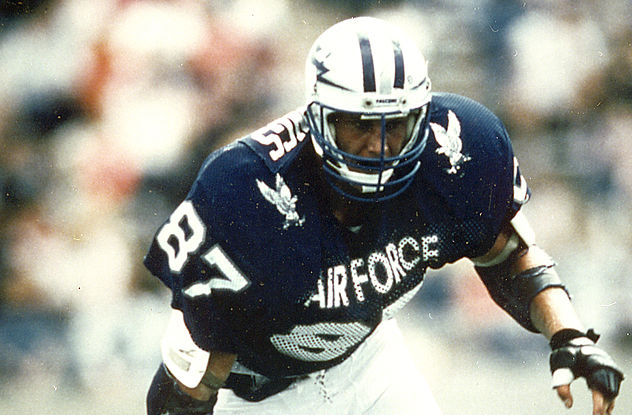
A Dallas Cowboy who served during wartime, Hennings won the Outland Trophy as a collegian before joining the Cowboys for three Super Bowl titles over nine professional seasons. A graduate of the Air Force Academy, Hennings was drafted by Dallas in 1988 but had to first serve four years in the military before he could begin his pro career.
Serving in the Persian Gulf, Hennings flew 45 missions over Iraq as a part of Operation Provide Comfort, earning two Air Force Achievement Medals, along with an Outstanding Unit Award and a humanitarian award. The operation in which Hennings participated was largely a humanitarian effort, providing aid to Kurds in Northern Iraq while also clearing any remaining Iraqi threats from the area.
After serving in the Persian Gulf, Hennings returned to professional football but continued his service in the Air Force. Hennings remained a member of the Air Force Reserve throughout all of his nine years in the NFL.
1Chuck Bednarik

Concrete Charlie is highly regarded among those who long for the days of the rugged football player who refuses to leave the field under any circumstance, known for his time with the Eagles. The NFL is now filled by highly specialized athletes excelling at a single position, but Bednarik was not one of those. He played on offense, on defense, and on special teams before special teams even had its own name. As his plaque in Canton, Ohio reads, Bednarik was a “bone-jarring tackler,” and if that’s not enough, he was also a “rugged, durable, bulldozing blocker.”
If anything served to harden Concrete Charlie, it was likely his service during World War II. A member of the Army Air Corps, Bednarik was just a teenager when he joined as an aerial gunner, flying 30 combat missions, all over Germany.
According to Bednarik, the most dangerous of those missions was a simple delivery. Bednarik was charged with delivering gasoline 16 kilometers (10 mi) behind enemy lines to refill 500 of General Patton’s tanks. Bednarik recalled the mission, saying, “We had no bombs in the bomb bay; we had nothing but gasoline—thousands of gallons of gasoline. Picture taking off or landing with a plane full of gasoline. If we had crashed, I would be dust. That mission scared the hell out of us. We went over and landed, and I could hear boom, boom, boom from where the fighting was going on. We dumped that gas and got the hell out of there real fast.”
For his service, Bednarik earned the Air Medal, four Oak Leaf Clusters, four Battle Stars, and the European Theater Operations Medal.
J. Francis Wolfe is a freelance writer and a noted dreamer of dreams. He aspires to one day live in a cave high in the mountains where he can write poetry no one will ever see.



